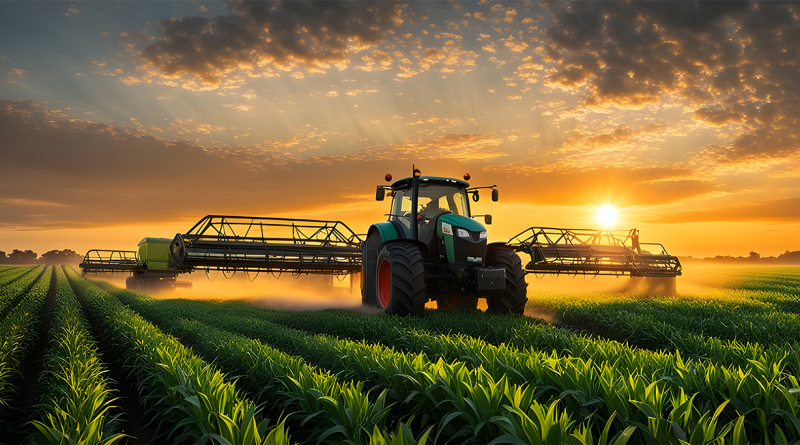John Deere Deploys 5G: Farmers Worry Over Right to Repair Restriction
In the heart of the American Midwest, John Deere, the iconic agricultural equipment manufacturer, is leading a manufacturing revolution by harnessing the transformative power of 5G technology. The company, with its rich history dating back to 1837, has consistently pushed the boundaries of innovation, and its latest endeavors in 5G connectivity are no exception.
John Deere’s journey with 5G began in 2020 when the company proactively secured dedicated spectrum licenses through the Citizens Broadband Radio Service, managed by the OnGo Alliance. This strategic move allowed John Deere to take control of the design, deployment, and operation of its cellular network, ensuring that it could fully leverage the capabilities of 5G to drive its manufacturing operations.
The results of John Deere’s 5G implementation have been impressive. In just six weeks, the company’s in-house network engineering team, working alongside Nokia, was able to establish a production-ready 5G network, showcasing the company’s technical expertise and its relentless pursuit of efficiency.
Automation and Optimization
The integration of 5G has unlocked a wealth of transformative use cases within John Deere’s manufacturing facilities. The company has deployed over 100 automated guided vehicles (AGVs) that leverage 5G connectivity to seamlessly transport critical components throughout the assembly process, significantly streamlining workflows and enhancing productivity.
Furthermore, John Deere has harnessed the power of computer vision, enabled by 5G’s ultra-low latency and high data throughput, to meticulously inspect welds for quality control and monitor worker safety, ensuring the highest standards of excellence in its manufacturing processes.
Beyond automation, 5G connectivity has also empowered John Deere to optimize its assembly line processes. By wirelessly measuring torque levels on power tools, the company can ensure optimal workflows and minimize errors. Additionally, 5G has revolutionized John Deere’s ability to reconfigure assembly lines, allowing the company to adapt to changing production needs in a matter of hours rather than days or weeks.
Advantages over Wi-Fi
One of the key factors driving John Deere’s decision to embrace 5G over traditional Wi-Fi solutions is the inherent benefits of 5G technology. The deterministic nature and seamless handoffs of 5G provide a level of reliability and consistency that Wi-Fi cannot match, while the network’s capacity to support up to 800 devices per radio far exceeds the 50-device capacity of a single Wi-Fi access point.
The enhanced security features of 5G also play a crucial role, with improved encryption and a stronger posture against cyber threats ensuring the integrity of John Deere’s industrial IoT deployments.
The fiber-like throughput and low latency of 5G have opened up new possibilities for John Deere in terms of installation and access. The company can now easily connect cranes, hoists, and overhead devices, such as smart cameras, without the need for cumbersome Ethernet cables. Moreover, the propagation capabilities of cellular spectrum allow John Deere to establish dependable connectivity across its vast manufacturing facilities, both indoors and outdoors, enabling seamless integration of processes like yard management, drive audits, rollover testing, and trailer tracking.
The Right to Repair Controversy
While John Deere’s embrace of 5G technology has undoubtedly driven innovation and efficiency within its manufacturing operations, the company’s adoption of this transformative connectivity solution has also sparked concerns among farmers and right-to-repair advocates.
John Deere’s long-standing policy of restricting access to diagnostic tools and software has been a point of contention for years, with farmers and independent repair shops arguing that they should have the freedom to maintain and repair the equipment they own. This “right to repair” debate has put John Deere at the center of a heated discussion around the balance between manufacturer control and consumer autonomy.
The introduction of 5G connectivity within John Deere’s manufacturing processes has the potential to further exacerbate this ongoing debate. By integrating 5G-enabled technologies, such as advanced computer vision and automated diagnostics, the company may gain even tighter control over the maintenance and repair of its equipment, effectively limiting the ability of farmers and independent shops to service their own machines.
The high-speed, low-latency, and secure nature of 5G networks could enable John Deere to implement remote diagnostic capabilities, allowing the company to monitor and potentially intervene in the repair process. This level of manufacturer oversight could potentially restrict the ability of farmers to make even minor adjustments or repairs, further solidifying John Deere’s position as the sole authorized provider of maintenance and repair services.
Balancing Innovation and Consumer Rights
As John Deere continues to push the boundaries of manufacturing innovation with 5G technology, it will be crucial for the company to carefully navigate the delicate balance between advancing its technological capabilities and respecting the rights of its customers. Failure to address the concerns of farmers and right-to-repair advocates could lead to increased scrutiny, legal challenges, and potentially damaging public relations consequences.
John Deere’s embrace of 5G technology stands as a testament to the company’s unwavering commitment to innovation and excellence. By harnessing the power of this transformative connectivity solution, John Deere is redefining the boundaries of manufacturing, driving increased automation, enhanced efficiency, and unparalleled connectivity throughout its operations.
As the company continues to push the limits of what’s possible in the world of agricultural equipment production, its relentless dedication to quality, innovation, and a customer-centric approach is poised to solidify its position as the industry leader, delivering the most technologically advanced, safe, and reliable agricultural implements to help feed the world.
